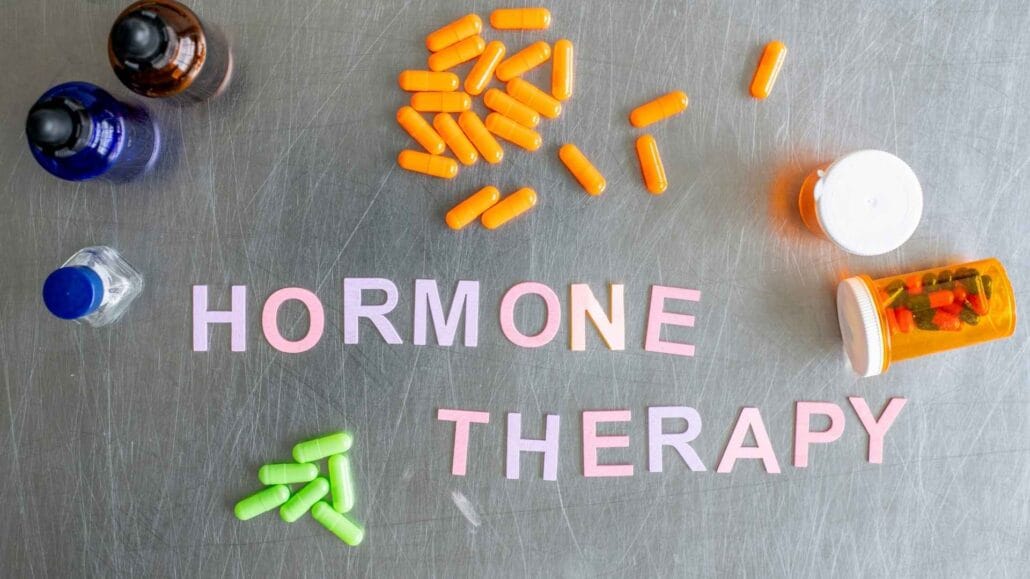Transgender Hormone Therapy – Effects, Cost & Treatment Guide

Transgender Hormone Therapy, also called gender-affirming hormone therapy, is a crucial step in transgender healthcare. For many, it’s not cosmetic, not optional, but a lifeline. It allows the body to reflect the gender identity a person knows inside. That alignment alleviates dysphoria, stabilises mental health, and allows daily life.
Globally, standards are derived from the World Professional Association for Transgender Health (WPATH). Their standards enable doctors to deliver care that is safe, ethical, and evidence-based.
In India, availability remains patchy but awareness and advocacy grow. Increasingly more doctors are being trained and increasingly more clinics are learning how to treat transgender patients, and all is being slowly bettered.
The bigger picture? Hormone therapy is more than pills. It’s about respect, dignity, and compassion. It tells healthcare that it can benefit from human diversity, and that trans patients are owed not only treatment, but affirmation and care.
Table of Contents
What is Hormone Therapy in Transgender Care?
So what is hormone therapy, then? Basically, it’s healthcare that helps the body adjust in ways that are gender identity-friendly. It makes transition happen. It reduces gender dysphoria. It makes the mirror a bit nicer.
There are two main routes here.
- Feminising hormone therapy – in transgender women or male-to-female (MTF) individuals. This often involves estrogen to induce feminine features and sometimes anti-androgens to block testosterone.
- Masculinising hormone therapy – for trans men or female-to-male (FTM) individuals. This uses testosterone to produce masculine characteristics.
The changes are not instantaneous, and tracking is necessary. Hormones influence the liver, blood, bones, and fertility. Therefore, physicians track levels, adjust dosages, and obtain long-term safety.
The takeaway? Hormone therapy is potent and life-altering, but medical. Safe care, not shortcuts, is the key to making the journey sustainable.
Alright, if these are the two choices, the following question is obvious. What are these treatments in detail?
Types of Hormone Therapy for Transgender Individuals
What kinds of hormones are we talking about? Let’s break it down.
- Estrogen therapy – Transgender women use it. Causes development of breasts, softer skin, and redistribution of fat to hips and thighs. Muscle mass drops. Facial and body hair growth decelerate.
- Testosterone therapy – Central for transgender men. Produces deeper voice, muscle building, facial and body hair, and menstruation ceases. Bone density builds over years, and the body masculinises in form.
- Puberty blockers (GnRH analogues) – Essential for transgender youth. These stall puberty, allowing young individuals time to experience identity prior to irreversible processes taking effect. Subsequently, they are able to convert to estrogen or testosterone.
- Hormone replacement vs lifelong therapy – In contrast to menopausal hormone replacement, transgender hormone therapy is not discontinued. Stopping typically results in the body reverting, so permanent use becomes standard.
Timeline | Feminising Effects | Masculinising Effects |
3–6 months | Softer skin, breast budding | Voice deepening, period stops |
6–12 months | Body hair slows, fat redistribution | Muscle gain, facial hair begins |
18–24 months | Breast development stabilises | Hair growth thickens, body shape set |
Hormones set the stage. But how exactly do they work on the body?
How Hormone Therapy Works
Alright, let’s take a look under the hood. Hormone therapy pulls the magic trick by changing the ratio of sex hormones. Estrogen and testosterone are the mischievous twins of puberty, and they determine everything from the storage of fat to the voice tone.
In trans women, estrogen with testosterone blockers erases the male characteristics and develops female characteristics. In trans men, testosterone substitutes for estrogen and feminises the body.
The process is gradual. Consider months, even years. For example, breast growth in transgender women lasts two to three years. Voice deepening in transgender men usually happens in the first year but plateaus after that.
The alterations are physical, but the impact is psychological. The majority of transgender people state that they can finally be themselves at home in their own bodies. Depression and anxiety diminish. Self-worth improves. Social interactions improve.
Hormone therapy is science, but it’s also identity, peace of mind, and belonging.
So who makes all this happen safely and ethically?
Guidelines and Best Practices
That is where WPATH enters. Their Standards of Care are recognised globally. They give physicians explicit step-by-step procedures: evaluation, treatment, follow-up, and ongoing support.
Best practices are:
- Beginning with thorough medical and psychological evaluations.
- Tailoring hormone regimens to individual goals of patients.
- Monitoring on a regular basis to verify hormone levels, liver function, cholesterol levels, and blood status.
- Talking about saving fertility before initiating therapy, as hormones could affect the possibility of biological children.
In India, WPATH-informed care is becoming more accessible. Endocrinologists in large cities such as Delhi, Mumbai, and Bangalore are more aware. NGOs and community clinics also fill gaps.
The point is made. Safe, ethical transgender care is feasible. But only if systems honor transgender identities, not pathologise them.
So what about risks?
Risks, Side Effects, and Safety
Are hormones safe? Yes, but not completely risk-free. Here’s the lowdown.
- Short-term side effects are acne, fluid retention, mood swings, or changes in libido.
- Long-term risks vary by hormone. Estrogen can boost risk of blood clots, particularly if smoking. Testosterone can increase cholesterol or red blood cell levels. Both can interfere with fertility.
Other issues:
- Bone health – particularly for transgender individuals who discontinue hormones later in life.
- Cardiovascular wellbeing – keeping an eye on cholesterol, blood pressure, and clotting factors.
- Liver function – because hormones are metabolised there.
Ongoing medical monitoring is not optional. Routine blood work, bone scans if indicated, and open communication with physicians keep patients in the safe zone.
Forgetting this precaution or going it alone is where risk enters. Safe hormone therapy is always supervised, never do-it-yourself.
And that being said about supervision, the elephant in the room is cost and access.
Accessibility and Cost
Let’s talk numbers. Because access isn’t just about medical science, it’s about affordability.
In India, transgender hormone therapy costs can look like this:
- Estrogen pills – ₹200–₹500 per month.
- Estrogen patches or injections – ₹1,000–₹3,000 per month.
- Testosterone injections – ₹1,500–₹3,500 monthly, depending on the brand.
- Doctor visits and lab tests – ₹2,000–₹5,000 every few months.
Most insurance policies don’t cover this, so transgender people usually pay out of pocket. That makes affordability a barrier, especially outside metro cities.
Now compare.
- In the U.S., testosterone might cost $30–$150 a month with insurance. Without coverage? Sometimes triple. Estrogen pills can be $20 a month, but patches or injections are far higher.
- In the UK or Canada, public health systems cover most costs, making it close to free.
That gap shapes everything. In India, some people delay care, ration doses, or turn to unsafe sources. Others travel to bigger cities just to find a knowledgeable doctor.
Country | Estrogen (monthly) | Testosterone (monthly) | Insurance Coverage |
India | ₹200–₹3,500 | ₹1,500–₹3,500 | Rare |
USA | $20–$450 | $30–$450 | Sometimes |
UK/Canada | Free or minimal | Free or minimal | Publicly covered |
The reality? Accessibility decides whether hormone therapy changes a life… or remains out of reach.
Social and Psychological Impact
And what does it do when access is real? Lives open up.
Hormone therapy reduces dysphoria. Anxiety and depression typically evaporate.
Transgender people feel more authentic, more comfortable in their bodies, and more able to work, have relationships, and engage in community life.
The effect spreads outwards. Families understand better. Communities become aware. Sight is increased. All those who cross over safely help drive stigma back.
For trans young people, safe access can be life-affirming. Studies show lower suicide attempts, better school attendance, and healthier social relationships. For adults, it’s about finally stepping into actuality after decades of hiding.
Health care here isn’t personal—it’s public. When institutions welcome transgender people, society is telling them, “You belong.” And that message heals more than medicine alone can do.
Conclusion
Transgender hormone therapy is not something small. It is one of the most powerful medical interventions an individual can get. It enhances mental wellness, alleviates dysphoria, and brings authentic living to reality.
But safely it can only be done under medical care. Proper monitoring, appropriate dosing, and moral care are the difference between the life-saving benefits and unnecessary risk.
In India, access is better, but cost and coverage continue to stand in the way for many. That has to change. Because healthcare never ought to be based on privilege. It should be about dignity, about being able to live as you are.
The plea is straightforward. Increase coverage, add more doctors, construct inclusive systems. Hormone therapy is not optional, not luxury—it’s basic care.
To each and every transgender individual, access to hormone therapy safely isn’t merely treatment. It’s affirmation. It’s dignity. It’s life itself.
View More Services


